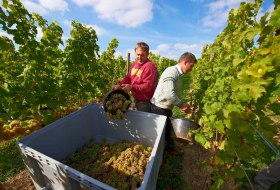
searchMenu



Although the natural alcohol content of a wine is not really an indication of quality, it is a very important factor, when it comes to the level of ripeness for the grapes. In a very limited way, the alcohol content of a win may be increased, if it happens to be too low, due to natural circumstances. The actual alcoholic volume must be given in volume percentage (% vol) on the wine bottle label (= how many ml of alcohol are contained in 100 ml of wine).

Before a wine can be sold, it must be chemically analyzed. This means that the wine is tested for alcohol, acidity, density, residual sugar and sulfur content.

Abbreviation for "Amtliche Prüfnummer" (Official Inspection Number) It is given to a wine, that has been recognized by the examining authority as a quality or predicate wine. The Official Inspection Number (APNr.) is composed of the abbreviation of this word, the farm number (consisting of the number of the inspection body, the number of the place of bottling and the code number of the bottling plant) and application number and year. Example: At the APNr. 4 725 012 001 16 would therefore be 4 = reference number of the Alzey…

The approximately 600 aromas contained in wine, still have not fully been analyzed. Most of them develop during fermentation . They are, what makes wine such a unique drink. The aroma substances are partly detectable sensorically.

In Rheinhessen, autumn does not only describe the season (September, October, November), but especially the time of grape harvest, which takes place in these months. Anyone who foes in the vineyard in order to harvest grapes, "goes into autumn" (not "in the grape harvest"). The er also incudes yield and quality of the grapes.

The total acidity of a grape must is normally 6.5-7.5 g / l for white wines and 5-6 g / l for red wines. It is composed of tartaric acid, malic acid and lactic acid and succinic acid. Tartaric acid is the "backbone" of a wine. It shapes its taste and is a determining factor in its storage life. The relationship of acidity and alcohol content, among other factors, is an integral part of the wine's harmony. The proportion of tartaric acid also depends on the grape variety. In immature wines, the malic acid predominates. In some years,…